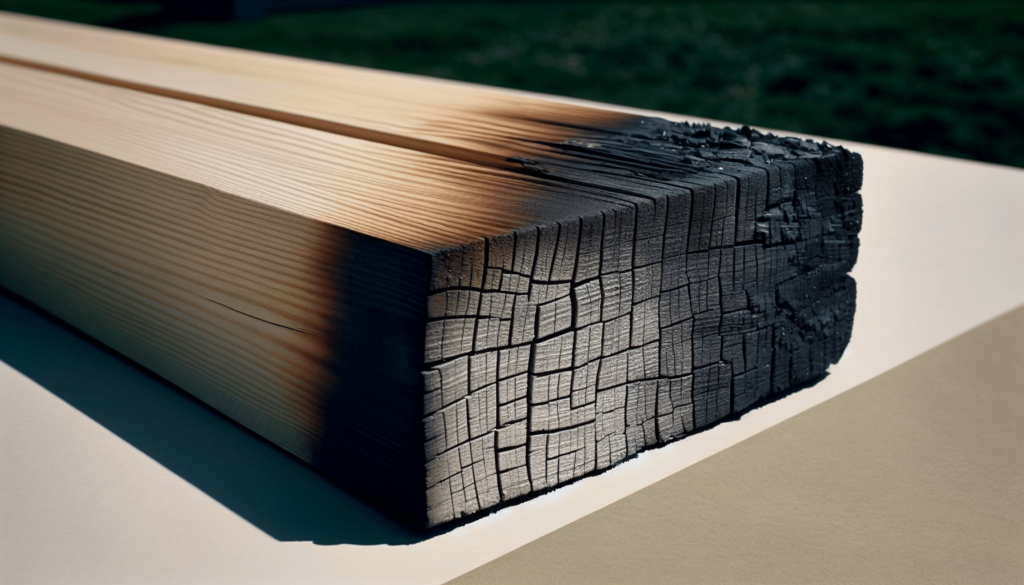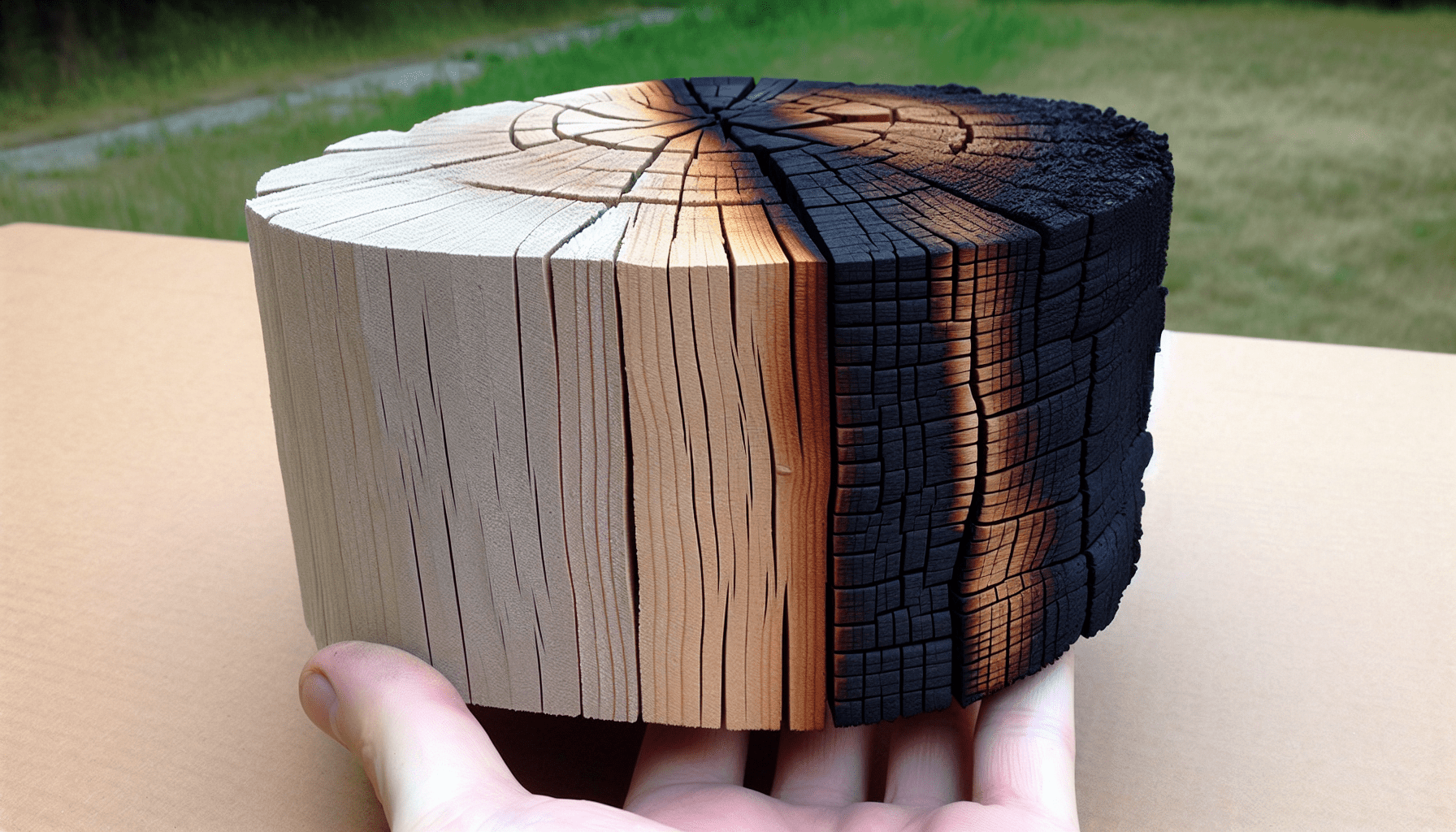I’ve always been curious about the dos and don’ts of dealing with pressure-treated wood, especially when it comes to using heat on it. In the article “Can Pressure-treated Wood Be Torched?” I explore whether it’s safe or advisable to use a torch on this type of wood. The piece delves into the chemical treatments involved in making the wood resistant to pests and rot and how these treatments interact with high temperatures. The conclusion might surprise you, as it definitely made me reconsider some of my DIY plans! Have you ever found yourself pondering the eternal question, “Can pressure-treated wood be torched?” Maybe it’s crossed your mind while working on a DIY project or perhaps while planning a bonfire with friends. You might be thinking, “What’s the big deal? It’s just wood, right?” But, oh, it’s so much more than that. Let’s dive into this fascinating topic and see what it’s all about.

What is Pressure-Treated Wood?
Before we talk about torching it, let’s make sure we’re all on the same page about what pressure-treated wood actually is. Pressure-treated wood is lumber that’s been chemically treated to resist rot, insects, and fungus. This makes it ideal for outdoor structures like decks, fences, and garden boxes.
The Treatment Process
The wood undergoes a process where it’s placed in a pressure chamber and infused with chemical preservatives. This helps it withstand elements that would normally cause untreated wood to deteriorate quickly. Think of it as marinating wood, but instead of a delicious teriyaki sauce, it’s snacking on a cocktail of chemicals.
Types of Chemicals Used
Some common chemicals used in the treatment process include:
| Chemical | Purpose |
|---|---|
| Chromated Copper Arsenate (CCA) | Increases resistance to rot and insects |
| Alkaline Copper Quaternary (ACQ) | More environmentally friendly |
| Copper Azole (CA) | Resistant to fungus and bacteria |
Remember those names, as we’ll be revisiting them soon.
Why Would You Want to Torch Pressure-Treated Wood?
Ah, the million-dollar question. The reasons can range from aesthetic purposes to practical needs. Let’s break it down a bit.
Aesthetic Purposes
You might be going for that rustic, charred-wood look that you saw in a Pinterest post last week. Torch-burning wood can give it a unique, aged appearance that paints and stains just can’t replicate.
Practical Needs
Torching wood can also be part of a controlled burning process to get rid of any finishing, previous coats of paint, or impurities. It’s like giving your wood a fresh start—think of it as a wood detox.
Safety Concerns
But hold your horses! Before setting anything ablaze, it’s crucial to understand the safety concerns involved.
Toxic Gases
When you burn pressure-treated wood, those chemicals we talked about earlier can release toxic gases. These gases can be harmful when inhaled, causing serious respiratory problems. And let’s not even get started about the environmental impact.
Chemical Residues
Burning pressure-treated wood can leave chemical residues in the ash. This can be hazardous, especially if it’s in a place where kids or pets might come into contact with it.
Fire Hazards
Pressure-treated wood is formulated to be more durable, which sometimes includes making it more resistant to fire. This means it might not burn as predictably as untreated wood.
Legal Restrictions
Now, if the safety issues weren’t enough to put you off, let’s talk about the legalities.
Local Ordinances
Many local jurisdictions have rules against burning chemically treated wood. It’s always best to check your local regulations before you light that match.
Environmental Protection Agency (EPA) Guidelines
The EPA has guidelines that discourage and, in some cases, prohibit the burning of pressure-treated wood due to the release of harmful chemicals into the environment.

Alternatives to Torching
If you’re still hankering for that burnt-wood aesthetic or need to clean up your lumber, there are safer alternatives to consider.
Stains and Paints
You can achieve a similar look to torch-burned wood by using stains and paints designed to mimic the appearance. There are even specialty products available that offer a charred look without the need for open flames.
Heat Guns
For a more controlled burning process, consider using a heat gun. It’s more manageable than a torch and significantly reduces the risk of releasing harmful chemicals.
Sanding
Sometimes a good old-fashioned sanding can remove finishes and impurities, giving your wood a fresh start without the need to burn it.
What If You Absolutely Must Burn It?
Okay, let’s say you’re a rebel and you’re absolutely set on burning pressure-treated wood. If that’s the case, here are some precautions you should take.
Protective Gear
Wearing proper protective gear is non-negotiable. This includes a respiratory mask, gloves, and safety goggles. Remember, safety first!
Well-Ventilated Area
Make sure you’re in a well-ventilated area. Outdoors is preferable, but if you must work indoors, ensure there’s adequate ventilation to disperse any toxic gases.
Controlled Environment
Keep a fire extinguisher or a bucket of water nearby. If things start to go south, you’ll want to be prepared.
Tips for Handling Pressure-Treated Wood
Whether you decide to torch or not, handling pressure-treated wood comes with its own set of guidelines.
Cutting and Sawing
When cutting or sawing pressure-treated wood, always wear a mask to avoid inhaling dust particles. These particles can contain the same chemicals we talked about earlier.
Disposal
Proper disposal of pressure-treated wood is crucial. Many places have guidelines for disposing of chemically treated lumber. Check with your local waste management facility for specific instructions.
Storage
Store your pressure-treated wood in a dry place to avoid rot and mold. Proper storage will extend its lifespan and save you headaches down the line.
Conclusion
So, can pressure-treated wood be torched? The short answer is: it’s complicated. While it’s technically possible, the risks often outweigh the benefits. Safety concerns, legal restrictions, and environmental considerations all play a significant role in making torching pressure-treated wood more trouble than it’s worth. But fear not! There are plenty of safer alternatives to achieve that charred, rustic look you might be going for.
It’s always better to be safe than sorry. Stick to recommended guidelines, consider alternative methods, and above all, prioritize safety. That way, you can enjoy your projects without unintended consequences.
What about you? Have you ever torched pressure-treated wood? Or do you have a burning question you need answered? Leave a comment and let’s keep the conversation going.

